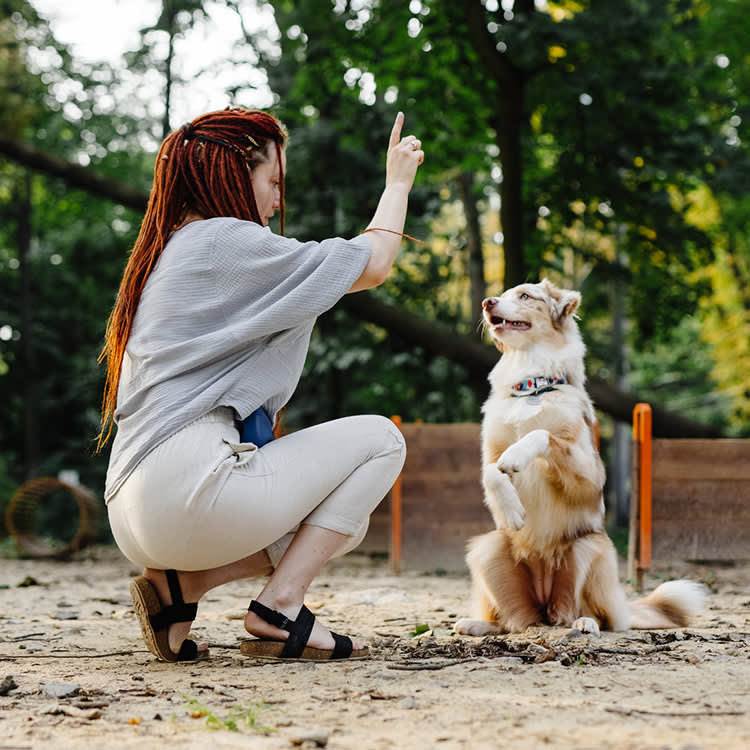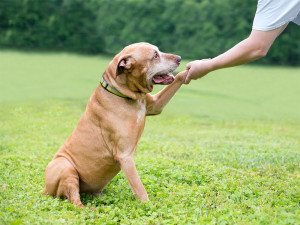Understanding Popular Dog Training Methods
Look behind the advertising language when picking a dog trainer
If you live in a big city like I do, you’re overwhelmed with choice for just about any service you can think of. I could get a different coffee and haircut every day of the week and never leave my local neighbourhood. This is great, in theory, but how do I choose the best place for my morning latte? Who should I trust to get my hair faded just right?
Choice is also a benefit when you’re looking for a dog trainer, but you can end up facing the same kind of issues, with a lot more riding on the outcome than a bitter drink or a less-than-stellar coif.
So how do we find the right trainer if we have only Google to go on? Online reviews are hardly fair and balanced, but we don’t always have the luxury of a personal recommendation. The answer is to learn how to interpret the language used on dog-training websites.
Understanding dog trainer language
Think of a trainer’s website as an infomercial. Although we know it’s designed to convince us to sign up, if we’re savvy, we can also pick through the language to find clues about a trainer’s methods and beliefs. Let’s start with the most common word, which pops up on almost every trainer’s site: effective.
Of course, we all want our dog trainer to be effective. Who would sign up for Dave’s Ineffective Dog Training? We’re spending time and money trying to help our dogs become well-mannered citizens, and we don’t want to feel like our efforts have been wasted. However, there are many different ways to accomplish training goals, some more fraught with potential pitfalls than others. Efficacy is important, but so too are ethics – another point that trainers try to reflect in their word choice.
Words like ‘compassionate’, ‘fair’ and ‘humane’ indicate what trainers believe about themselves, but they don’t add much clarity for potential clients. All three are subjective terms; what I believe represents compassionate training might not be what you envision. Besides, what counts as humane and compassionate is determined by a trainer’s beliefs about how dogs learn and how best to teach them, so these words raise questions rather than answer them.
Trainers also use a relatively small number of more specific, objective-sounding terms on their sites. Because these can provide a general idea of the kinds of things that might happen to a dog during training, it’s useful to understand what they mean. Following is a list of the most commonly used.
Force-free or positive
Trainers who describe themselves as ‘force-free’, or some variation of ‘purely positive’ will never deliberately use pain or fear in their training. They will focus on finding ways to reward a good behaviour that is incompatible with the behaviour they don’t want to see, like sitting politely instead of jumping up on guests. Often, they’ll use a clicker and treats, paired with ignoring the dog when he’s doing something inappropriate.
The key thing to remember here is that although these trainers might see themselves as using only positive, gentle methods, what really matters is how the dog sees things. Force-free trainers who put clients’ dogs in situations where they feel uncomfortable or who can’t teach their guardians the skills required to carry on after the session can cause frustration and anxiety, and even reinforce undesirable behaviour.
Balanced
Trainers who describe themselves as ‘balanced’ may use everything from electronic collars to clickers in their approach. The balance here is between things designed to punish bad behaviour and things designed to reward good behaviour. However, not all balanced trainers will use every tool or the same balance of rewards and punishments. Some will use punishment only in certain cases, others will use it most of the time. Many balanced trainers make distinctions among different breeds of dogs or different types of problems that they believe won’t respond to the kinds of reward-based approaches on which force-free trainers rely.
For example, many balanced trainers claim that although dogs can learn tricks using a clicker and treats, they can be taught to avoid rattlesnakes only by associating the snakes with something unpleasant, like a shock. Force-free trainers strongly disagree with claims like this, which has led to serious rifts within the dog-training community.
LIMA and Humane Hierarchy
These terms are less common than the previous two, but they are gaining traction in professional circles as a way to explain both an ethical stance and a practical approach to dog training.
LIMA stands for ‘least invasive, minimally aversive’, meaning that with any set of possible interventions, the trainer will always try whatever is least likely to cause pain or punishment first, only moving to more potentially unpleasant options if they feel the need.
The Humane Hierarchy was developed by Dr Susan Friedman as one way of organising potential interventions, from most to least punishing. A trainer who uses these terms is engaged with the latest thinking on ethics and wants to display this engagement to potential clients. It’s very unlikely that trainers who align themselves with LIMA will use punishment, especially for basic obedience issues.
Boot camp and other military terms
This kind of language usually suggests that the trainer believes in punishment as the best way to manage behaviour. Trainers who sell themselves as providing this type of intervention often also subscribe to ideas about dominance and ‘being the alpha’. They appeal to frustrated pet parents who are faced with dogs who seem rude and out of control, but their approaches can be harsh and lead to suppression, not modification. Trainers who describe themselves or their approach in this controlling, militaristic language are probably best avoided altogether.
There Is no substitute for substance
Although being able to parse these terms and understand them gives us more of a picture of how a trainer operates than the words ‘humane and effective’, each label represents a spectrum of beliefs and approaches.
The only way to get the clearest possible information is to ask trainers directly. That means you’ve got to shop around, get in front of trainers, and ask unambiguous and substantial questions about what is going to happen to your dog, and why. Dog behaviour consultant John McGuigan proposes the following questions, which every trainer ought to easily be able to answer:
What will happen to my dog if she gets it right?
What will happen to my dog if she gets it wrong?
Are there less invasive alternatives to what you propose?
These questions don’t cover everything and they can’t inoculate you against a marketing spiel, but they’re a good place to start. If you’re not comfortable with the answers you get; if the trainer becomes evasive and starts using concepts like ‘energy’, talking around the question or invoking his or her years of experience; or if the answer involves anything that is designed to cause pain, to startle or to do anything else unpleasant, think twice. It’s your responsibility to exercise due diligence when choosing a dog trainer, and it’s always better to risk being seen as a busybody than it is to put your dog in a situation you didn’t want or expect.





